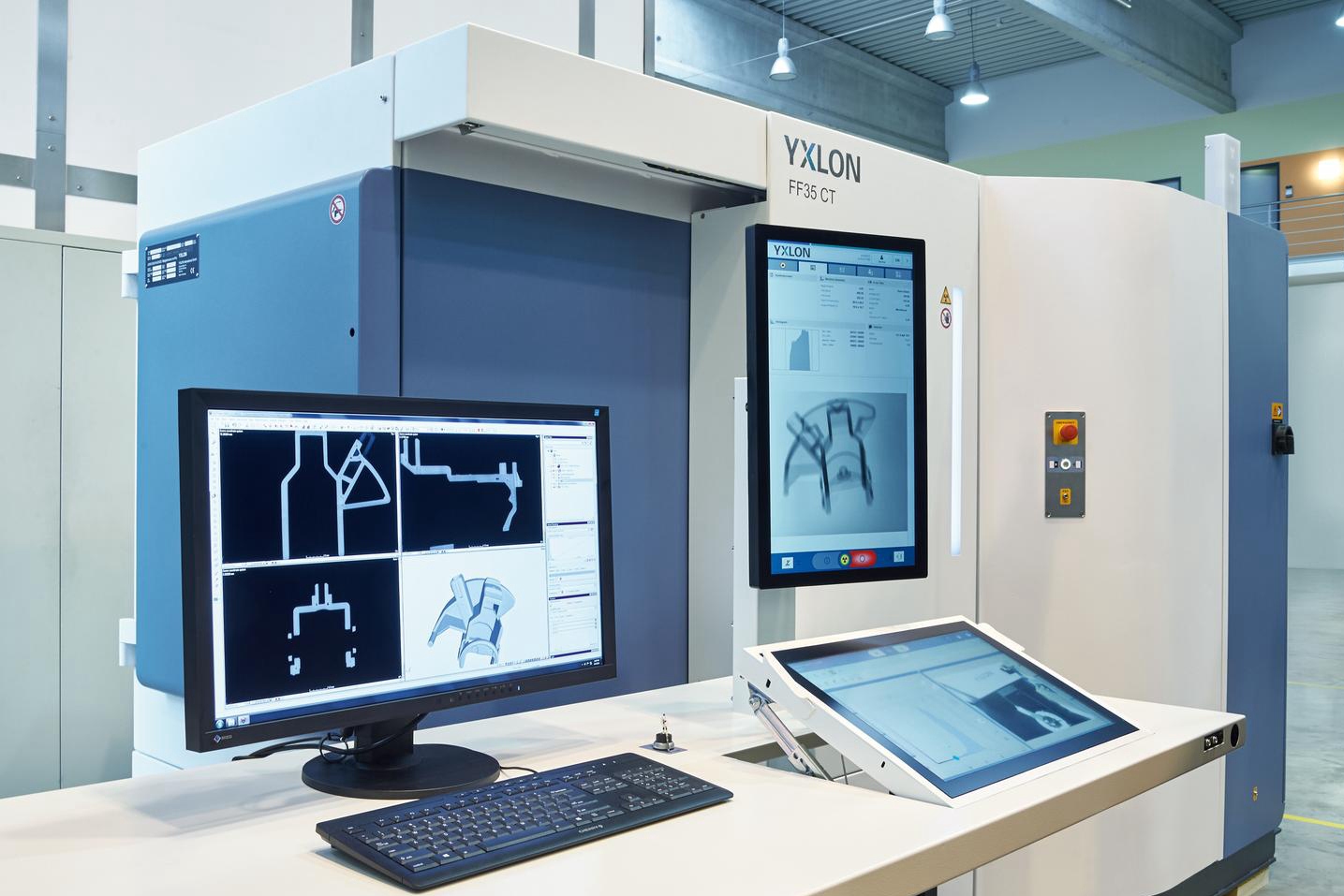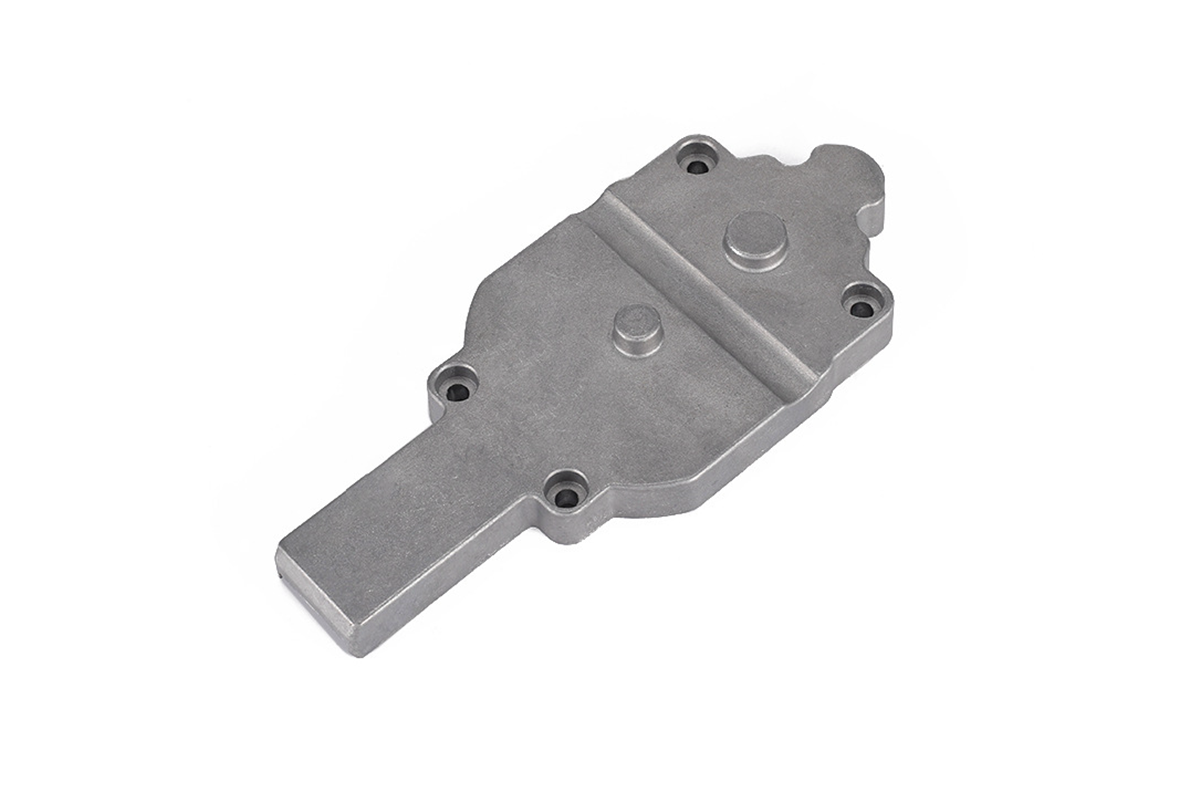450kV Industrial CT Custom Parts Defect Inspection
Introduction
In the realm of custom parts manufacturing, ensuring the integrity and quality of complex components is paramount. As manufacturing techniques evolve to produce parts with intricate internal geometries and tight tolerances, traditional inspection methods often fall short in detecting hidden defects. This challenge has driven the adoption of advanced non-destructive testing technologies, among which 450kV industrial computed tomography (CT) scanning stands out as a powerful solution.
With its high-energy X-ray capabilities, 450kV CT inspection enables deep penetration into dense materials, providing detailed volumetric images of internal structures without damaging the part. This capability is critical for identifying defects such as porosity, cracks, inclusions, and dimensional deviations in metals and composites used across aerospace, medical, and automotive sectors. Employing such advanced inspection not only ensures product reliability but also supports process optimization and cost reduction in custom parts manufacturing.
Leveraging the custom parts manufacturing expertise integrated with 450kV CT scanning technology provides manufacturers with a robust quality assurance system, crucial for meeting stringent industry standards and customer requirements.

Principles of 450kV Industrial CT Scanning
X-ray Penetration Capabilities
The 450kV industrial CT system operates at a high voltage, which is essential for penetrating thick and dense materials such as steel, titanium alloys, and complex composite assemblies. This high-energy X-ray source allows for accurate imaging of internal features in parts with wall thicknesses often exceeding several centimeters, which lower voltage systems cannot reliably inspect. This capability is particularly valuable when inspecting aerospace-grade metals or heavy automotive components.
Image Resolution and Voxel Accuracy
Resolution in 450kV CT systems is defined by voxel size—the three-dimensional pixel representing volume data. These systems achieve voxel resolutions in the range of 5 to 50 microns, enabling detection of micro-defects such as porosity, cracks, and inclusions that can compromise part performance. Maintaining high voxel accuracy ensures the precise dimensional verification critical in custom manufacturing, aligning with standards such as ASTM E2698 for CT metrology.
Scanning Modes and Acquisition Strategies
Different scanning modes optimize image quality and inspection speed depending on part complexity:
Helical scanning allows continuous rotation with simultaneous vertical movement, suitable for long or large parts.
Step-and-shoot scanning captures multiple discrete slices and is ideal for parts requiring high resolution in specific sections.
Continuous rotation scanning provides a balance between speed and resolution, commonly used for medium complexity components.
These strategies enable customized inspection plans tailored to diverse part geometries and manufacturing tolerances.
Key Advantages in Defect Detection for Custom Parts
Non-Destructive Internal Inspection
450kV industrial CT scanning provides a critical advantage through its non-destructive nature, allowing full volumetric inspection without altering or damaging the part. This is essential for custom parts with complex internal features, such as cooling channels or embedded inserts, which are inaccessible by conventional inspection methods. By preserving part integrity, manufacturers can conduct repeat inspections during different production stages, facilitating process control and early defect identification.
High Accuracy for Micro Defect Detection
With the capability to detect defects as small as a few microns, 450kV CT scanning excels in identifying internal porosity, micro-cracks, inclusions, and other anomalies that could lead to premature failure. This precision supports compliance with industry standards, including NADCAP CT requirements for aerospace components, ensuring that parts meet or exceed rigorous quality benchmarks.
Complete Volumetric Data for Reverse Engineering and Dimensional Verification
Beyond defect detection, the three-dimensional data acquired through 450kV CT scanning enables detailed dimensional analysis and supports reverse engineering workflows. Manufacturers can compare scanned data against CAD models to verify tolerances and identify deviations, enhancing manufacturing accuracy. This integration is especially beneficial when combined with precision CNC inspection, enabling comprehensive quality assurance across manufacturing processes.
Application Scenarios in Custom Parts Manufacturing
Aerospace Structural Components
In aerospace manufacturing, components such as sheet metal assemblies, enclosures, and structural brackets demand rigorous inspection due to their critical roles and complex geometries. The use of 450kV CT scanning facilitates detailed evaluation of internal welds, fasteners, and layered materials without disassembly. This technology supports compliance with aerospace standards, exemplified by its application in aerospace sheet metal fabrication, where it ensures structural integrity and reduces costly rework.
Medical Implants and Devices
Medical devices, including implants and surgical instruments, require stringent defect detection to guarantee patient safety and performance. 450kV CT scanning enables thorough inspection of implant porosity, coating uniformity, and dimensional accuracy. Its application in medical device manufacturing ensures devices meet biocompatibility and regulatory requirements while maintaining structural performance.
Complex Die Castings
Die cast parts, such as aluminum or zinc alloy components, often suffer from internal defects like porosity, cold shuts, and shrinkage cavities. 450kV CT scanning provides comprehensive volumetric data to detect these flaws in aluminum die casting and other metal castings, enabling manufacturers to refine casting processes and improve yield.
Injection Molded Parts with Metal Inserts
Hybrid parts combining plastic and metal, such as overmolded or insert molded components, present inspection challenges due to varying material densities. The advanced CT system facilitates visualization of metal inserts within plastic matrices, verifying insert placement and adhesion quality in insert molding.
Integration with Digital Twin and Advanced Quality Systems
Enhancing Process Control with PDCA
The Plan-Do-Check-Act (PDCA) cycle is a cornerstone of continuous improvement in manufacturing. Integrating 450kV industrial CT data into the PDCA framework enables precise monitoring of quality metrics and facilitates rapid corrective actions. For custom parts manufacturing, this approach supports systematic defect reduction and process stabilization. Utilizing advanced inspection data aligns with the principles outlined in PDCA manufacturing control, enhancing product reliability and customer satisfaction.
Digital Twin Integration
Combining 3D volumetric data from CT scans with digital twin technology provides a comprehensive virtual representation of parts throughout their lifecycle. This digital twin can simulate manufacturing variations, predict failure modes, and optimize design and process parameters. High-fidelity inspection data enables more accurate modeling, improving decision-making and reducing time to market.
Traceability and Data-Driven Quality Assurance
The detailed imaging and data from 450kV CT inspections contribute to robust traceability, critical for regulated industries. Capturing and storing inspection results allows manufacturers to demonstrate compliance, facilitate audits, and conduct root cause analyses. Coupled with real-time data analytics, manufacturers gain insights to preempt quality issues and optimize manufacturing workflows.
Case Study: Turbine Blade Defect Inspection with 450kV CT
Background
Turbine blades used in aerospace and power generation demand exceptional structural integrity due to extreme operating conditions involving high temperatures and stresses. Manufacturing these components from superalloys requires meticulous quality control to detect internal defects that could compromise performance.
Inspection Challenges
Traditional inspection methods, such as dye penetrant testing and ultrasonic inspection, are limited in detecting subsurface and internal flaws within complex geometries. Given the blades’ intricate cooling channels and varying wall thicknesses, a high-energy, high-resolution method like 450kV industrial CT scanning is necessary to provide a comprehensive volumetric assessment.
Implementation
Using a 450kV CT, turbine blades were scanned to generate detailed 3D images of internal structures. This allowed identification of micro-porosity, cracks, and inclusions invisible to surface inspection. The scan data enabled comparison with CAD models to verify dimensional tolerances and detect deformation.
Outcomes
The inspection facilitated early detection of manufacturing defects, reducing scrap rates and rework costs. It also provided valuable feedback to refine casting and machining processes, enhancing overall component quality. This case illustrates the value of advanced CT inspection in superalloy component manufacturing for critical aerospace parts.
Conclusion
450kV industrial CT scanning represents a transformative technology in the inspection of custom parts, offering unparalleled insight into internal structures and defects. Its high penetration power and fine resolution enable manufacturers to detect micro-defects and dimensional deviations in complex components without destructive testing. This capability supports stringent quality standards across demanding industries such as aerospace, medical devices, and precision manufacturing.
Integrating 450kV CT inspection within a robust quality control system, including methodologies like the PDCA cycle, enhances process stability and product reliability. Furthermore, coupling CT data with digital twin technology enables predictive analytics and continuous improvement, streamlining production and reducing costs.
As demonstrated in advanced applications like turbine blade inspection, 450kV industrial CT empowers manufacturers to uphold the highest levels of quality assurance and maintain competitive advantage in custom parts manufacturing.



